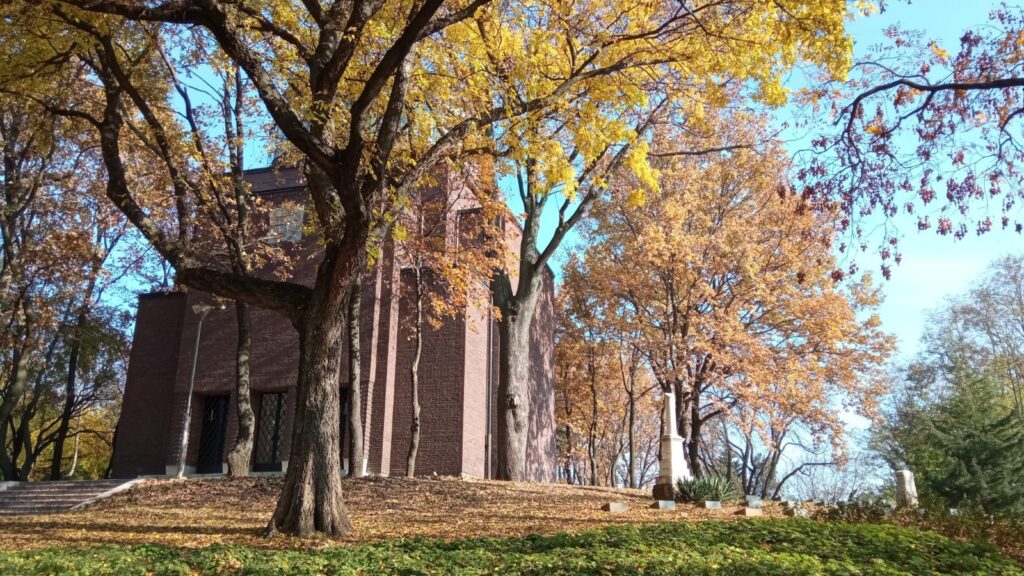The Hungarian Revolution that broke out in 1848 meant a special role for Debrecen: in the first half of 1849 the government of the country moved here, thus, Debrecen became a provisional capital city of Hungary, the ‘guard town of freedom’. The National Assembly held its meetings in the Oratory of the Reformed College, here Lajos Kossuth was appointed Regent as well as the dethronement of the Habsburgs and the Independence of Hungary were declared. The inhabitants of the town supported the unfolding war of independence by providing volunteers and material things. The decisive battle that meant an end to the war through a heavy defeat inflicted on the Hungarians took place at the western part of Debrecen on 2 August 1849.
Many places, statues, memorial plaquettes, historical scenes, exhibitions, commemorate the Hungarian Revolution and War of Independence of 1848-49. If you walk through these, you’ll get a picture about the role Debrecen played in the revolution.
Stops:
- Miklós street (Miklós utcai kapu)
The Emperor’s troops threatened the capital in the last days of 1848. In this grave situation, the government together with the National Assembly decided by the suggestion Lajos Kossuth, president of the National Defence Committee to move to Debrecen. After the decision, a minor migration started into Debrecen: in the first days of 1849 deputies of the government and thousands of refugees – soldiers, politicians, officials, prominent persons of the Hungarian literature (Vörösmarty, Petőfi, Jókai, Kemény Zsigmond) and their relatives – departed. Kossuth arrived on 7 January 1849 at one o’clock pm at Debrecen, crossing the border of the town at the gate in Miklós street. The guard posting at the town gate registered him with no. 2265, and put a side note to the no.: Kossuth, Moses of Hungarians. The gate is commemorated with a memorial plaque on the wall of building at the corner of Miklós utca and Külső Vásártér.
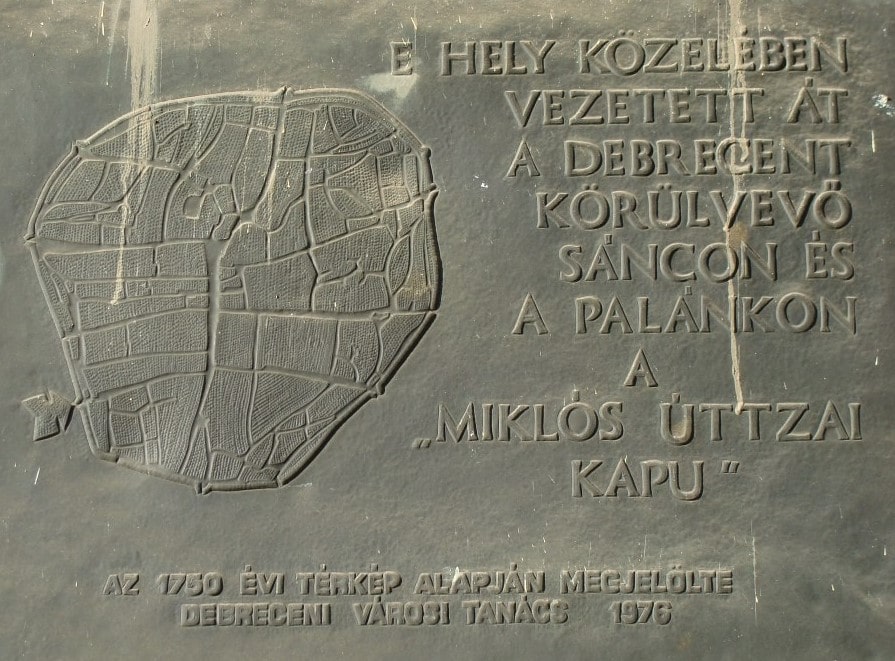
- Ormós House (Batthyány u. 16)
It is worth mentioning in relation to the many matters linking the War of Independence to Debrecen that Zoltán, Sándor Petőfi’s son was born in what is called Ormós House, in Harmincados köz, that stands today in Batthyány utca on 15 December 1848, exactly 9 months after the breakout of the Revolution of 1848. The child was soon christened in the parish in Szent Anna utca nearby. The distinguished event is commemorated with a memorial plaque on the house and the parish.
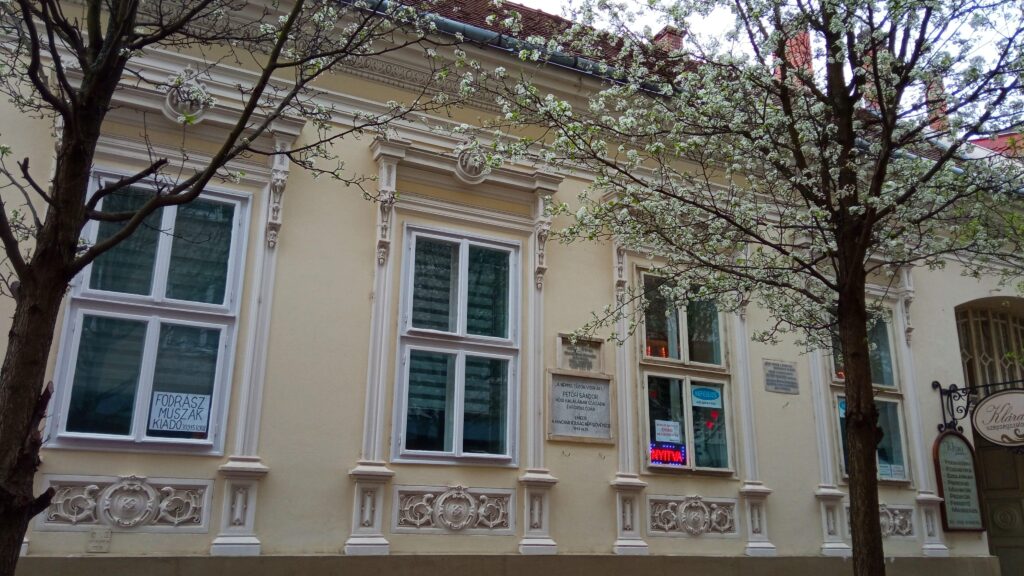
- Komáromi House (Kossuth u. 12)
At today’s Kossuth u. 12, when the government stayed in Debrecen, a police department and post office operated in what is called Komáromi House. The house became well-known to be the scene of preparational talks to the ‘Peace of Szatmár’ at the beginning of the 18th century. The plot came fully in the ownership of the town between 1736 and 1752, the house thereon was demolished in 1913. On this and the neighbouring plot was built the office building of the Financial Directorate, where today also the Palace of Finance stands.
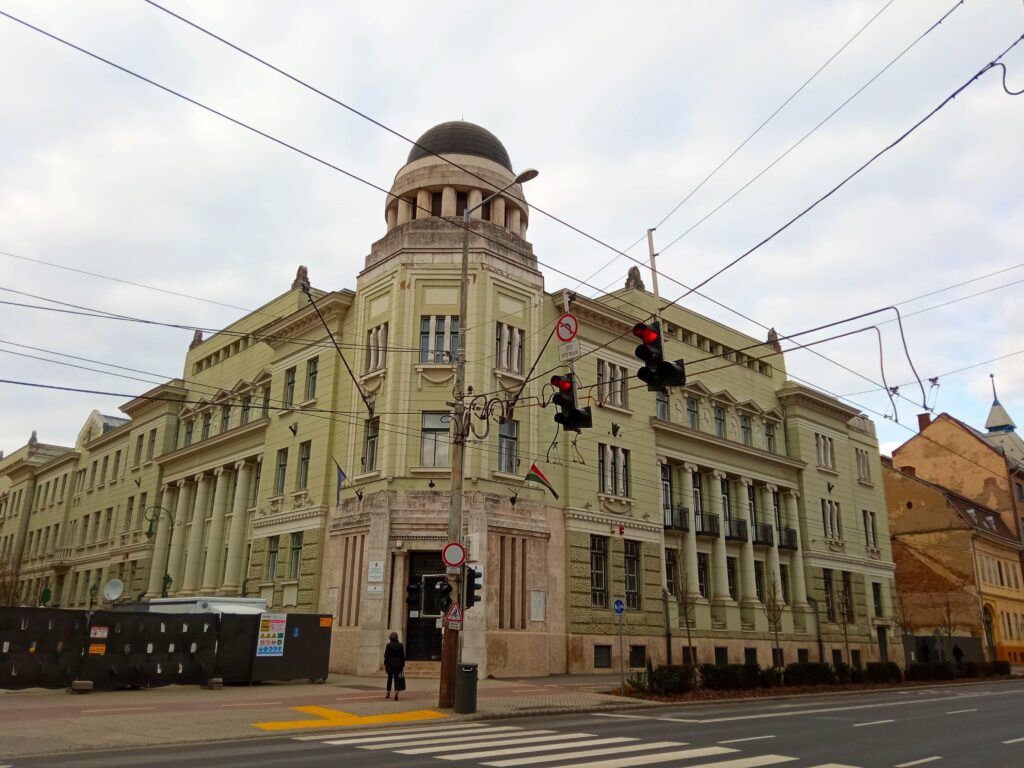
- Kis-Orbán House (Kossuth u. 4)
The Kossuth utca 4 was a home and office of László Madarász ‘police minister’ where a weapons factory operated. The former trading house later tax office building was connected to the town hall, which is of nearly the same age, in the first decade of the 20 century. The two building wings are interconnected via the ‘Bridge of Sighs’. The building operating as a weapons factory during the revolution is today the rear building wing of the Town Hall on Sas utca side.
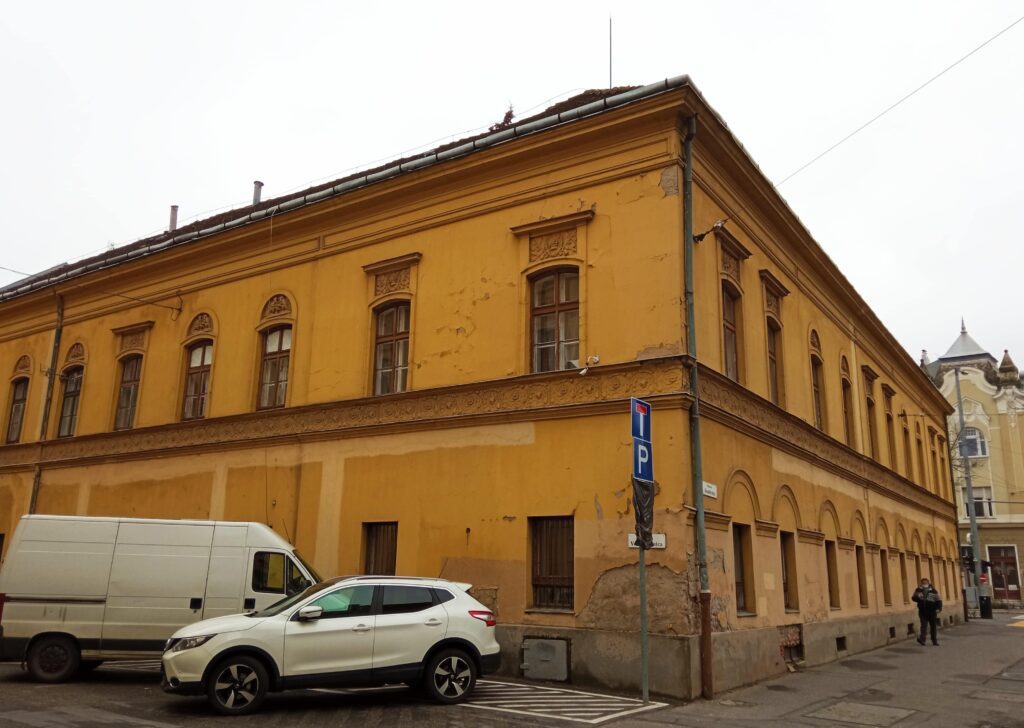
- Podmaniczky House (Széchenyi u. 1)
The historical particularity of the Classicist building at the corner of today’s Széchenyi and Piac utca built in 1820 is that the Upper House of the Hungarian National Assembly held meeting in its reception hall on the first floor in 1849, under the presidency of Baron Zsigmond Perényi, who died a martyr’s death later. Until the end of May 1849, 22 meetings were held here in total, attended in general by 30 to 35 noblemen. If an important matter was concerned, the two Houses if the National Assembly held a joint meeting in the Oratory of the Reformed College where the House of Deputies held meeting. In total three such meetings were held until the end of May in Debrecen. An interesting aspect in the history of the building that the general of the Czar’s troops, General Paskevich stayed in the building on 3 August 1849.
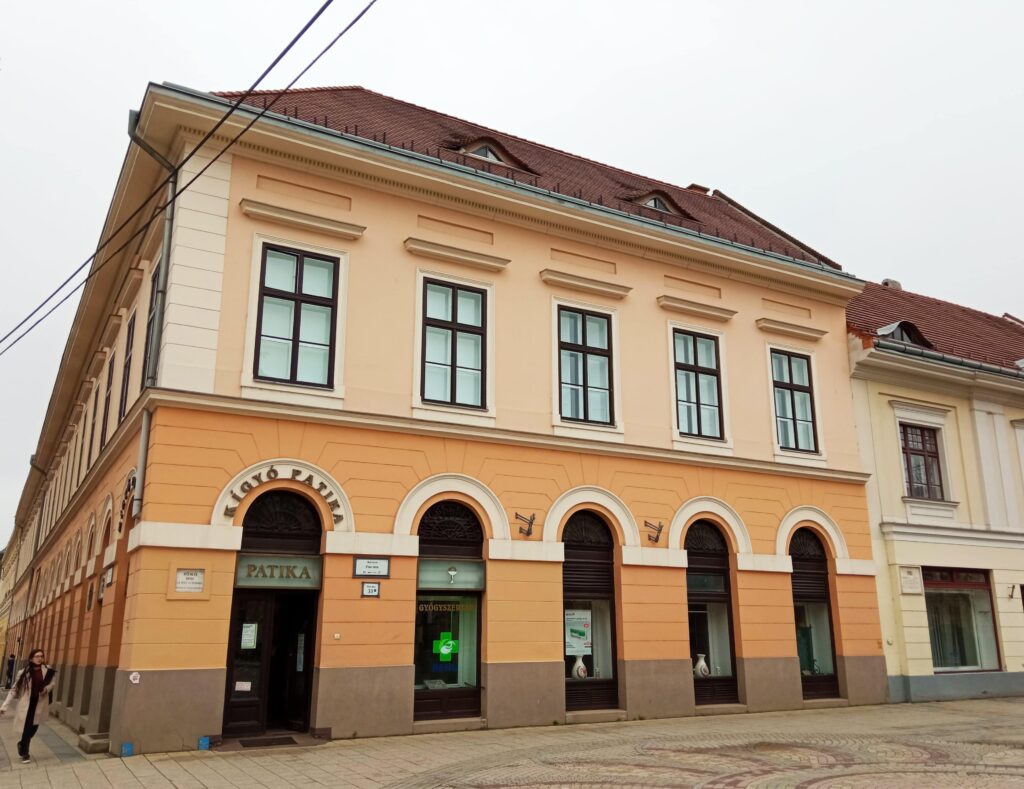
- Old Town Hall (Piac u. 20)
The most characteristic architectural memory of Debrecen is the Town Hall dating back to the 16th century. This place has been the administrative centre of the town since 1531 but the original building has been extended several times and often destroyed by fire. The ancient town hall was fully reconstructed after the fire that ravaged in 1802, it received its tympanum-arcade form by 1843. The Town Hall played an important role in the events of 1849: Lajos Kossuth and his family resided here and this was the place for the office of National Defence Committee, too. The Holy Crown of Hungary was kept in the ‘Secret Archives’.
Kossuth was greatly popular among the inhabitants of Debrecen. Although he worked late, he always allowed himself an hour pastime every day. This he spent on sightseeing in the town. He visited Fehérló Inn (where today the County Hall stands) where his Gypsy violinist Károly Boka played music, went twice to Nagyőr and Füvészkert (arboretum) (at today’s Déri tér) as he was keen on nature and adored flowers. The leader of the arboretum sent two large bouquets to Kossuth’s place every morning. One was put onto Kossuth’s desk, the other into his flat.
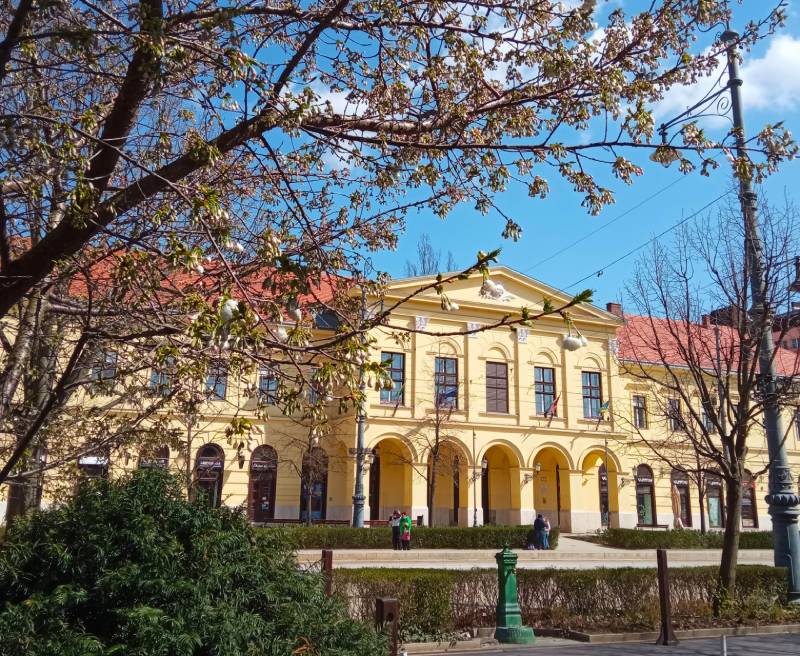
+ former Szabadság square (Piac utca walking zone)
The central square, the Nagy Piacz (Great Marketplace) home to the famous Debrecen market fairs was more hectic than usual due to many refugees coming to town in 1849. The area in front of the Town Hall was one of the most important places of open-air protests at the time of the Revolution. Here large crowd gathered when a discourse was given or people were assembled. At that time the area was renamed Szabadság tér (Freedom square). The landscape pf Piac utca changed several times in the past one and half centuries, Szabadság tér that was the time no longer exists. Nowadays the Piac utca walking zone is located there instead.
+ Beck House (Piac u. 18)
The seat of the ministry of war in the War of Independence was in a house next to the Town Hall, at today’s Piac u. 18. The house two-storey at the time was erected by Pál Beck royal commissioner in the 1820s. This was one of the most modern buildings at the time in the town. Its recent form was given by its third storey built on in 1892. The building also known as Dégenfeld-Tisza Palace is currently the seat of Regional Directorate of the Hungarian State Railways.
+ Andaházy-Szilágyi House (Piac u. 31)
The Andaházi-Szilágyi House stands even today opposite the Town Hall at Piac utca 31. The military and space command were based in this house in Debrecen in 1849. Kossuth greeted the town from the balcony of this house on 9 January 1849. The balcony with ornamented iron balustrade provided with monogram ‘SZM’ was removed in 1923 when the building was reconstructed and installed in today’s place on the internal yard of the residential building. The important historical event is commemorated by a memorial plaque placed on facade of Piac utca.

- Reformed Great Church (Kossuth tér)
In January 1849, due to the advance of the Austrian troops that threatened the capital of the country, the Hungarian government and national assembly moved its seat to Debrecen provisionally. That was the first time for Debrecen to become a provisional capital of the country. In this period, the Reformed Great Church became a spot for game-changing historical events: here the dethronement of the Habsburgs was declared on 14 April 1849 and the Declaration of Independence was read aloud by Lajos Kossuth on 19 April. Also, Kossuth took up his duties as Regent within the walls of the Reformed Great Church. One of the permanent exhibitions in the Reformed Great Church commemorates the historical events, whose most invaluable piece is Kossuth’s Chair.
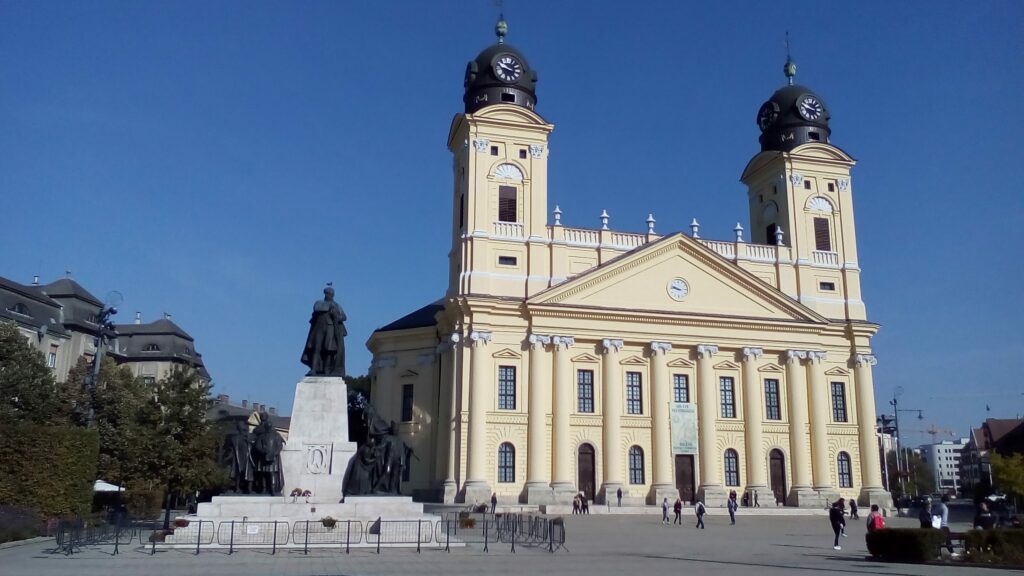
+ Kossuth group of sculptures (Kossuth tér)
The community of Debrecen also wished to erect a monument in the honour of the leading figure of the revolution after the death of Lajos Kossuth in 1894. Created jointly by Ede Margó and Szigfrid Pongrácz, supported from public donations and town budget, the monument was revealed on the main square of the town on 3 May 1914. The central figure of the statue is Lajos Kossuth. The secondary figures on the left side beneath him: Imre Szacsvay who drew up the Declaration of Independence as the notary of the National Assembly and Zsigmond Perényi, second chair of the Upper House. Both were executed. Behind them Mihály Könyves Tóth, pro-Kossuth military chaplain is towering over them who also had been sentenced to death but released after 8 years of prison. On the right of Kossuth, a banner-bearing soldier of the Red Cap Batallion says goodbye to his mother as he leaves for battle.
- Debrecen Reformed College (Kálvin tér 16)
The Debrecen Reformed College played a key role in the events of the revolution of 1849. The College was the seat of the ministry of finance, the bank note printing house operated in the ground floor of the building and the Lower Chamber (Chamber of Deputies) of the National Assembly held its meetings in the Oratory. The Lower Chamber held 58 meetings from 9 January until 31 May, other sources mention 64 public and 15 closed meetings. Kossuth gave a speech from the speaker’s stand of the Oratory. Under the speaker’s stand was the place of the president of the House of Deputies, on the left hand side the notaries, on the right hand side the president and vice president of the National Defence Committee sat. The well-known persons of the National Assembly sat close to the speaker’s stand and pulpit in the banks today marked with copper plates, Lajos Kossuth (Regent after 14 April 1849) and the members of the National Defence Committee. The meetings of the House of Deputies were public, many attended by the locals and refugees. The audience took place in the gallery.
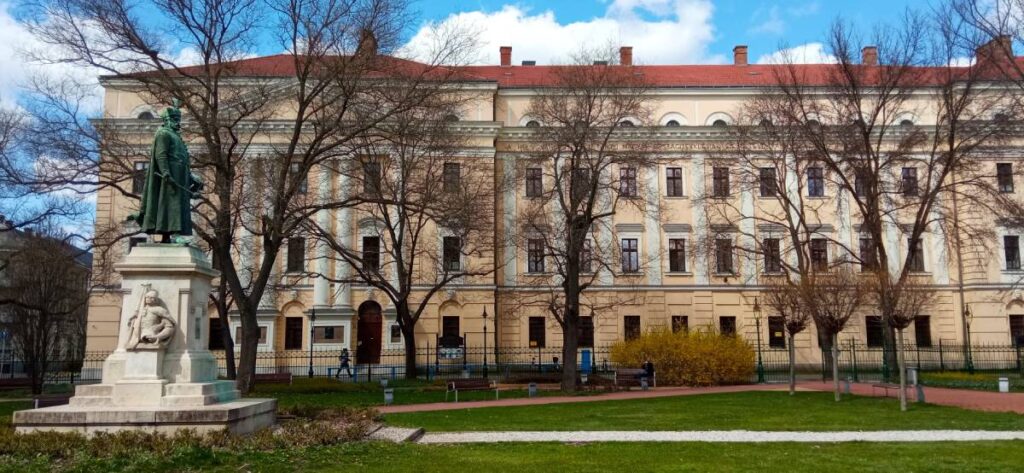
- Déri Museum (Déri tér 1)
In the showcasing space of the Memory of 1848 of the Déri Museum, visitors can get a glimpse of the events of the Revolution related to Debrecen.
The report of the city’s two envoys arrived to Debrecen on 17 March 1848, in which they also gave account on the revolution in Vienna. Following the arrival of the news from Pest, the chief judge convened the general assembly on 19 March. The citizens have already learned about the 12 points of the Hungarian Revolutionaries so a several thousand strong crowd gathered at the City Hall on the 19th. People marched into the meeting room where their spokesmen declared that they wanted to take part in the discussion of the 12 points. Apart from this unaccustomed occurrence the assembly took place in a festive and orderly fashion. The city’s printing-house was declared free, orders were given to set up a militia, and finally, Lajos Kossuth was elected an honorary citizen of the city of Debrecen.
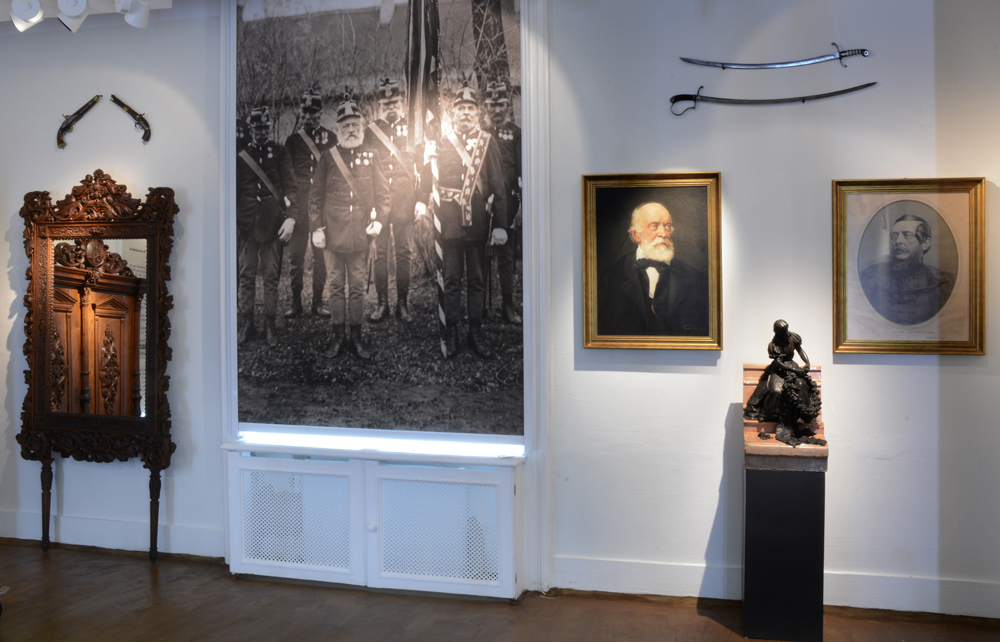
- Military Cemetery, Cemetery of Heroes (Honvédtemető u. 36)
Debrecen was surrounded by vineyards in the 19th century. Past one of these, Csigekert was where the last battle of the War of independence was fought on 2 August 1849 as the Russian Czar’s troops outnumbering many times inflicted a heavy defeat on the Hungarian soldiers. The casualties of the lethal battle were not buried in the denominations’ cemeteries but at the edge of Csigekert. The Military Cemetery was reopened during WWI. Soldiers died in the military hospital built in the vicinity of the cemetery were laid to rest here, whose burial were also attended initially by the 48’s soldiers already old men at the time. The Military Cemetery was closed again after WWI and was reopened no sooner than for the burial of Hungarian and German soldiers died in WWII. The mausoleum in the cemetery was erected in 1931, with the sculpture on its stairs by sculptor János Marsalkó ‘Wounded lion’ commemorating the soldier heroes.
